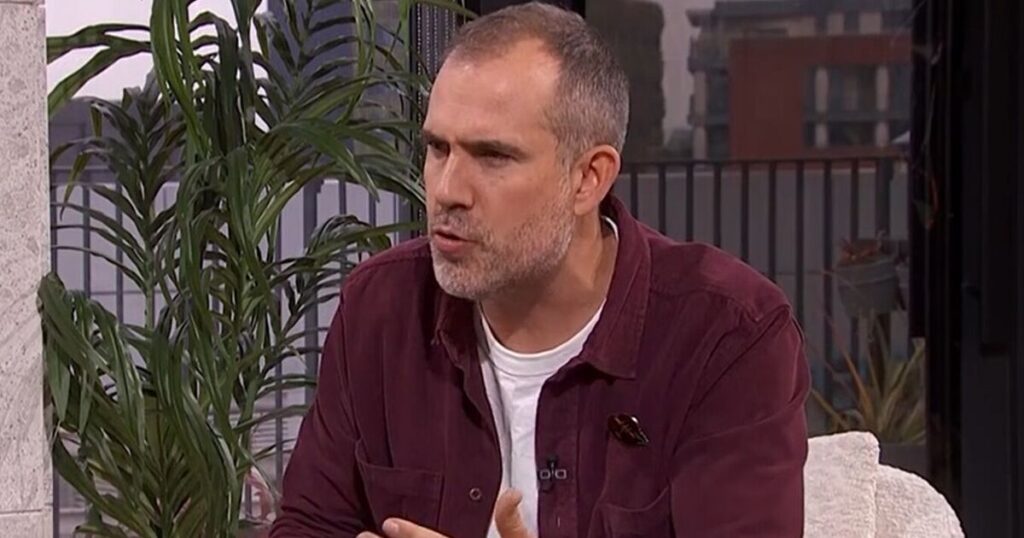
During a recent BBC Morning Live segment, Dr Xand revealed the optimal temperature for washing clothes. He explained which setting eliminates the most bacteria and which offers the best value for money.
You can adjust your machine’s settings to achieve different outcomes depending on your laundry load and desired cleanliness level. However, reports Bristol Live, some options prove costlier than others.
A snippet from the segment with Dr Xand was shared on TikTok.
It was captioned: “What temperature should you do your laundry at? Could you be washing your laundry at the wrong temperature?”
The post continued: “Dr Xand explains how hot you should be setting your machine to.” Speaking to viewers, Dr Xand said: “The hottest your washing machine will go is 90 degrees, usually, and that will kill everything.”
He continued: “It’s almost boiling. It’s bad for the clothes. It’s very expensive. Whatever’s happened to those clothes, I think you gotta get new clothes.”
Which laundry setting offers the ideal compromise between cost and hygiene?
The doctor recommended 60 degrees as the sweet spot for those seeking to reduce costs compared to a 90-degree cycle while still eliminating most germs. Although scorching temperatures like 90 degrees can destroy all bacteria, they risk damaging garments and are typically overkill.
For routine washing, 30 or 40 degrees proves adequate, whilst cooler cycles like 20 degrees work perfectly for minimally dirty items. Dr Xand has weighed in on the debate about the best temperature for washing clothes, saying: “At 60 degrees, certain bugs will be killed, and that can be quite good. So, if you’ve got an infection around your house, particularly norovirus, put it up at 60, along with the mechanical cleaning and the detergent.”
On the subject of a 40-degree wash, Dr Xand is less convinced, saying: “Personally, I don’t see the point in 40 degrees because it’s too hot to be cheap and it’s too cold to kill anything. Commit to one or the other. Either go hot or go cold.”
What’s Dr Xand’s preferred setting?
He advocates for a 30-degree wash as a balanced choice for energy conservation and cleanliness, especially for garments that aren’t heavily soiled. He explained: “30 degrees, that gets the job done. It is much cheaper. So going from 40 to 30 saves you almost 40 per cent in energy costs and it’s quicker. Make sure you get a lower temperature detergent.”
For delicate items and light soils, as well as to maximise energy efficiency, he recommends a 20-degree cold wash. Dr Xand shared his personal preference: “And then there’s 20 degrees. I’ve gotta say, I’m a 20 degrees guy for everything except my workout clothes, which go in hotter,” adding, “20 degrees saves 62 per cent of your money compared to 40 degrees, so that is a big deal. But at the lower temperatures, you gotta think about cleaning your machine.”
How can you keep a washing machine in tip-top condition?
Revealing his personal washing machine cleaning routine, he shared: “One is that tray you pull out, the detergent tray where all the mould grows. That can be a real nuisance to clean. I put it in the dishwasher and then mechanical.”
To tackle the drum, he recommends using a cloth dampened with white vinegar for a thorough wipe-down. He further advised: “If your machine has a cleaning cycle, which runs it at a high temperature, do that according to the manufacturer’s instructions, and then air it out.”
Dr Xand’s cleaning tips sparked a flurry of comments on TikTok, with many viewers offering their own laundry tips. One viewer suggested: “Just wash on a 30, but use Dettol laundry, gets rid of any germs.”
Another said: “60 for bedding, towels, flannels, dishcloths, tea towels, socks and underwear.” A third shared their experience: “I tried using 30 every time and my machine soon started to stink, went back to 40/60 and problem solved.” Meanwhile, another commenter noted: “It’s all about the detergents these days. 20 is fine.”
Gentle materials such as silk and wool should be laundered in cold or warm water, whereas cottons and linens can handle hotter temperatures. Items that are heavily soiled need higher temperatures for thorough cleaning, while those that are lightly soiled can be washed at lower temperatures.
Certain detergents are designed specifically for cold water washing, while others work more effectively at elevated temperatures. Lower temperatures typically conserve energy and lower utility bills, so keep this in mind when selecting a washing temperature.
 Latest World Breaking News Online News Portal
Latest World Breaking News Online News Portal






